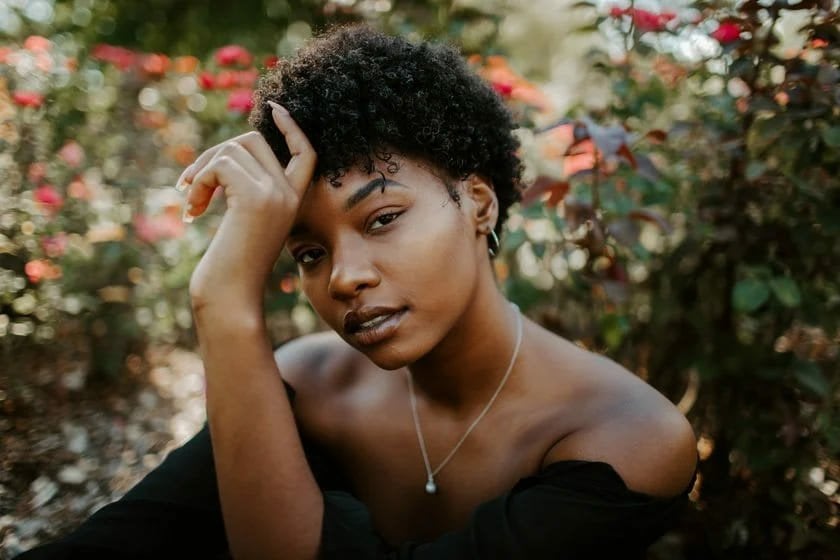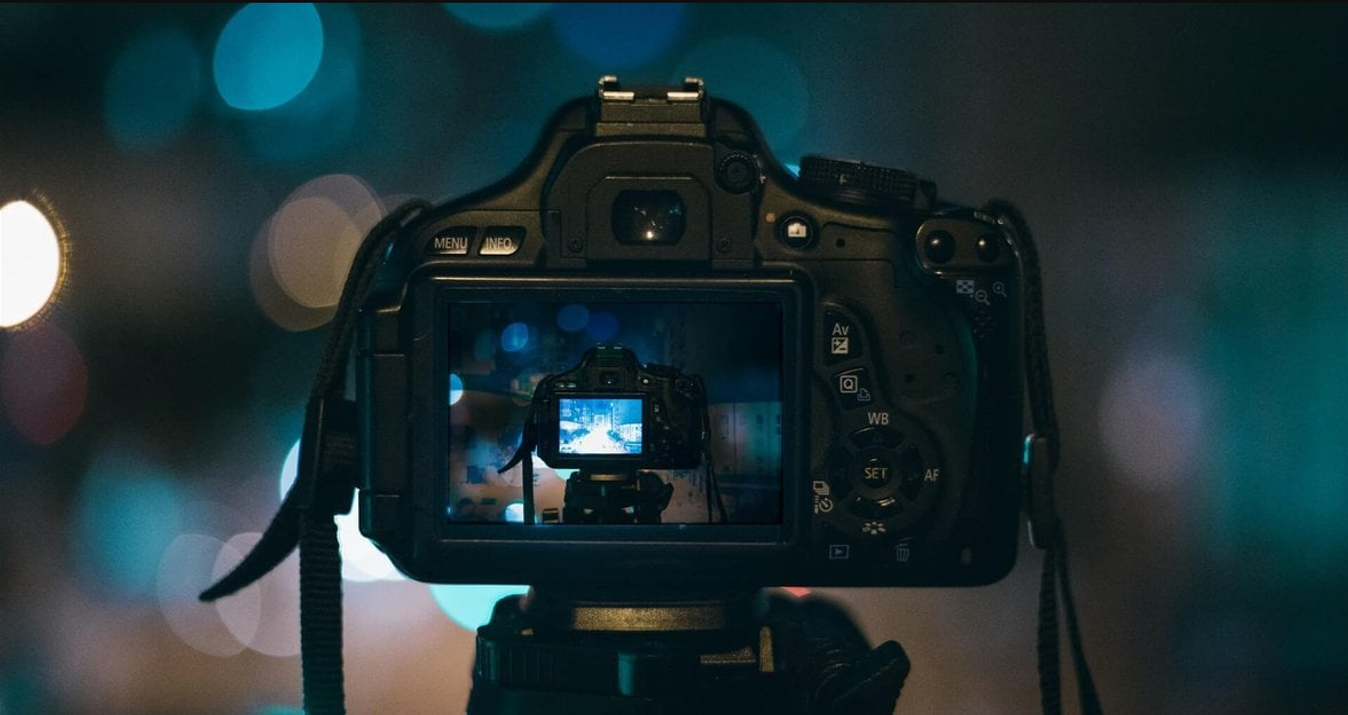Hochformat vs. Querformat: Hauptunterschiede
Januar 03, 2025
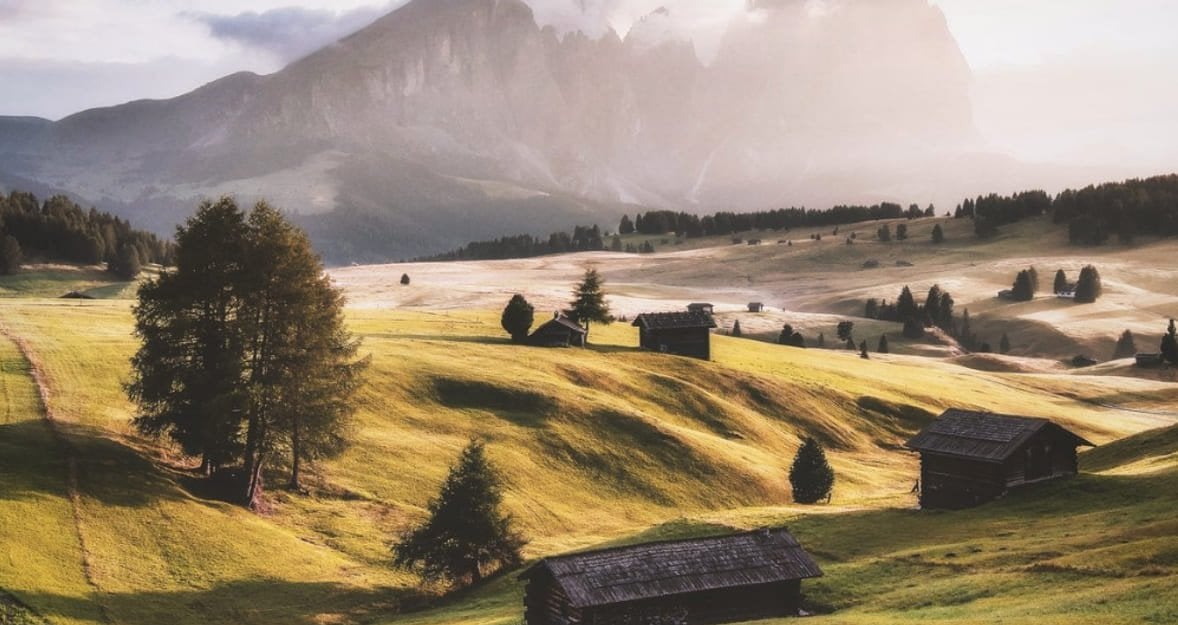
Der Bildaufbau ist eines der wichtigsten Elemente für die Erstellung beeindruckender Fotos. Heute werden wir uns zwei Fotoausrichtungen ansehen und herausfinden, welche davon für dich am besten geeignet ist.
Je mehr du lernst, desto besser wirst du, aber wenn du dich ständig fragen musst, wie du anfangen sollst, ohne etwas zu tun, wirst du bei der Aufnahme von Bildern nicht sehr weit kommen. Beim Fotografieren hast du dir wahrscheinlich die Zeit genommen, darüber nachzudenken, welche Komposition für ein Foto am besten geeignet ist. Aber hast du dir auch Gedanken über die Ausrichtung deiner Aufnahmen gemacht? Dieser Artikel befasst sich mit den Unterschieden zwischen Hoch- und Querformat, um dir bei der Entscheidung zu helfen, welche Ausrichtung für deine Fotos am besten geeignet ist.
Querformat im Vergleich zu Hochformat: Begriffsbestimmungen
In der Fotografie bezieht sich die Hochformatausrichtung auf die vertikale Positionierung der Kamera oder des Bildes, wobei die Höhe größer ist als seine Breite. Diese Ausrichtung wird häufig für die Aufnahme von Personen oder Objekten verwendet, die in der Regel in vertikaler Ausrichtung abgebildet werden und deren Höhe betont wird.
Bei der Ausrichtung im Querformat hingegen wird die Kamera oder das Bild horizontal ausgerichtet, wobei die Breite größer als die Höhe ist. Diese Ausrichtung wird in der Regel verwendet, um weite Szenen wie Landschaften oder weite Ausblicke aufzunehmen, wobei die Weite und Ausdehnung der Ansicht betont wird.
Was ist Hochformat
Der Modus Hochformat ist eine Kameraeinstellung, die dazu dient, eine Person oder ein Objekt mit einem scharfen Fokus auf das Motiv aufzunehmen. Mit dieser Einstellung kannst du ein Foto mit einem unscharfen Hintergrund erstellen, was auch als Bokeh-Effekt bekannt ist. Dieser Effekt unterstreicht das Motiv, so dass es auf dem Foto besser zur Geltung kommt.
Bei einem Porträt geht es darum, die Seele, die Individualität, den Charakter und den Ausdruck einer Person durch die Verwendung von Hintergründen, Beleuchtung und Körperhaltung zu vermitteln. Bei einem Porträt blickt eine Person oder ein Objekt in der Regel in Richtung der Kamera. Es gibt einige Gründe, warum das Hochformat oft bevorzugt wird. Zunächst einmal wird es oft als schmeichelhafter für Menschen angesehen. Außerdem kann es ein spannenderes Foto ergeben, weil der Betrachter mehr von der Szene sehen kann. Am besten fotografiert man menschliche Emotionen im Hochformat.
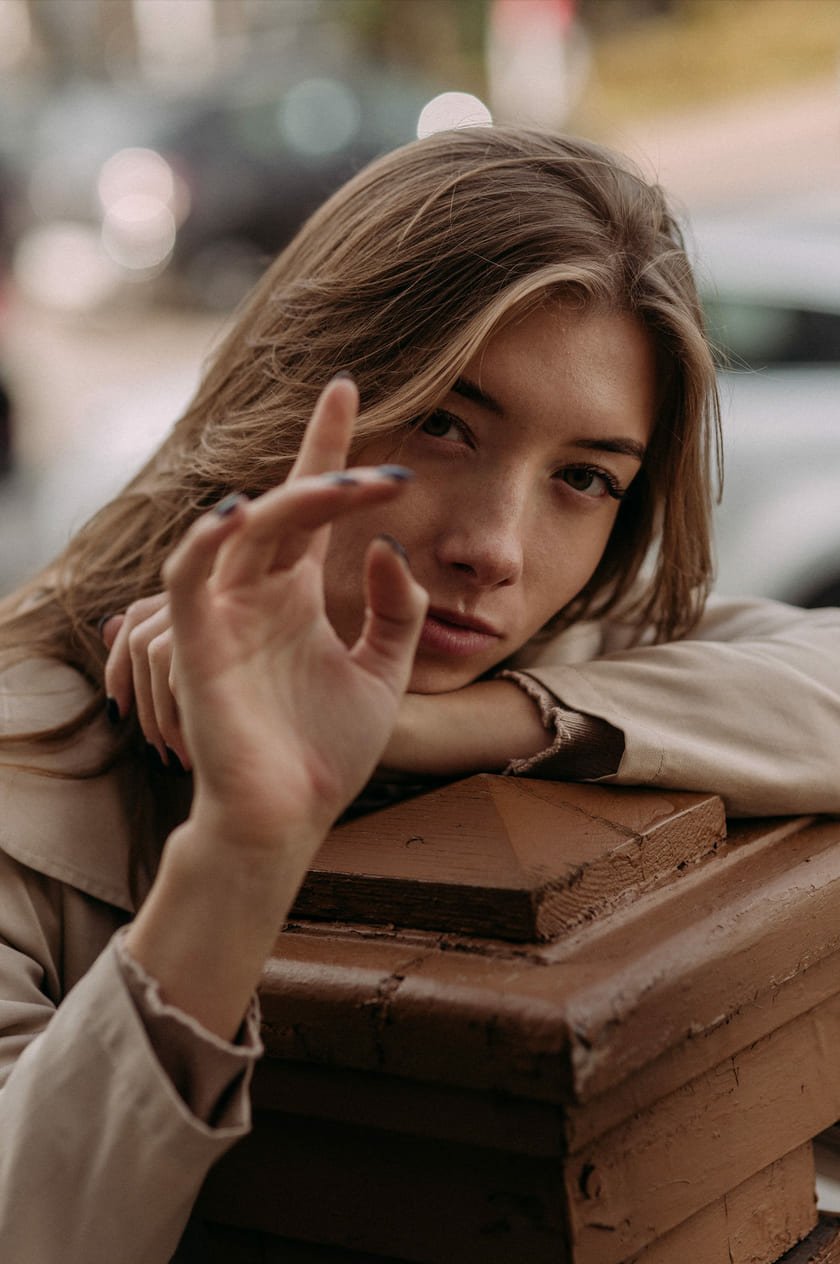
Was ist Querformat?
Querformat veranschaulicht Landschaften der Welt, die unermesslich und scheinbar endlos sein können. Das Ziel ist es, den Betrachter in die auf dem Bild gezeigte Szene zu versetzen und den Eindruck von der Weite und dem Staunen zu vermitteln, das man erleben könnte, wenn man selbst genau an dem Ort wäre, an dem fotografiert wurde.
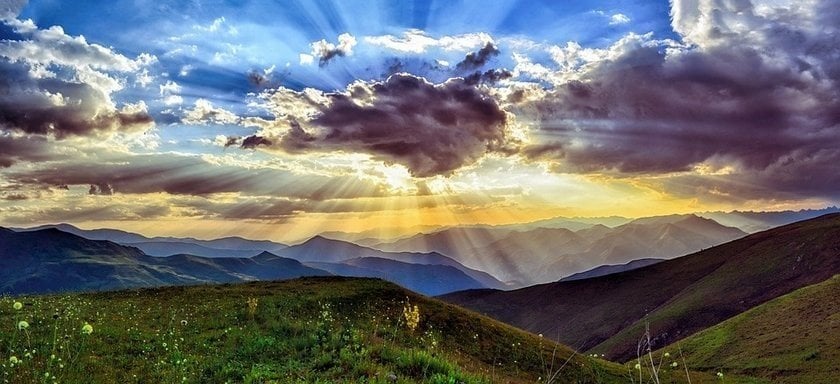
Hochformat vs. Querformat: Der Hauptunterschied
Der Hauptunterschied zwischen Quer- und Hochformat besteht darin, wie die Kamera beim Fotografieren gehalten wird. Der Hauptunterschied zwischen Quer- und Hochformat besteht darin, wie die Kamera beim Fotografieren gehalten wird. Dieser Unterschied in der Ausrichtung führt dazu, dass unterschiedliche Arten von Fotos aufgenommen werden.

Ist das Hochformat besser als das Querformat?
Bei der Wahl zwischen Quer- und Hochformat für Ihre Fotos gibt es keine richtige oder falsche Antwort. Es kommt auf das Thema des Bildes an und darauf, was man mit seinem Bild vermitteln möchte. Das Querformat wird in der Regel für umfassende, offene Szenen wie Landschaften oder Stadtansichten verwendet. Das Querformat vermittelt ein größeres Gefühl von Tiefe und Maßstab. Andererseits kann das Hochformat für Nahaufnahmen von Personen oder Objekten die ideale Lösung sein. Das Hochformat hilft, die Höhe des Motivs zu betonen. Letztlich kommt es auf die persönlichen Vorlieben und die Art des Fotos an, das man aufnehmen möchte.
Auswahl der Fotoausrichtung
Was die Ausrichtung betrifft, so ist es wichtig, daran zu denken, dass sowohl Hoch- als auch Querformat ihre Vor- und Nachteile haben. Was die Ausrichtung betrifft, so ist es wichtig, daran zu denken, dass sowohl Hoch- als auch Querformat ihre Vor- und Nachteile haben. Im Folgenden findest du einige Tipps, die dir bei der Wahl der richtigen Ausrichtung zwischen Quer- und Hochformat helfen werden:
1. Entscheide, welche Art von Foto du machen möchtest.
Das Querformat wird beispielsweise häufig für weite, weitläufige Aufnahmen von Landschaften oder Szenen mit viel vertikalem Raum verwendet. Auch hohe Motive wie Gebäude oder Berge lassen sich so einfangen und wirken imposanter. Das Hochformat hingegen eignet sich perfekt für intimere Aufnahmen von Menschen. Diese Ausrichtung lässt Menschen größer erscheinen und kann für aussagekräftigere Bilder verwendet werden, z. B. Fotos von Politikern oder Berühmtheiten.
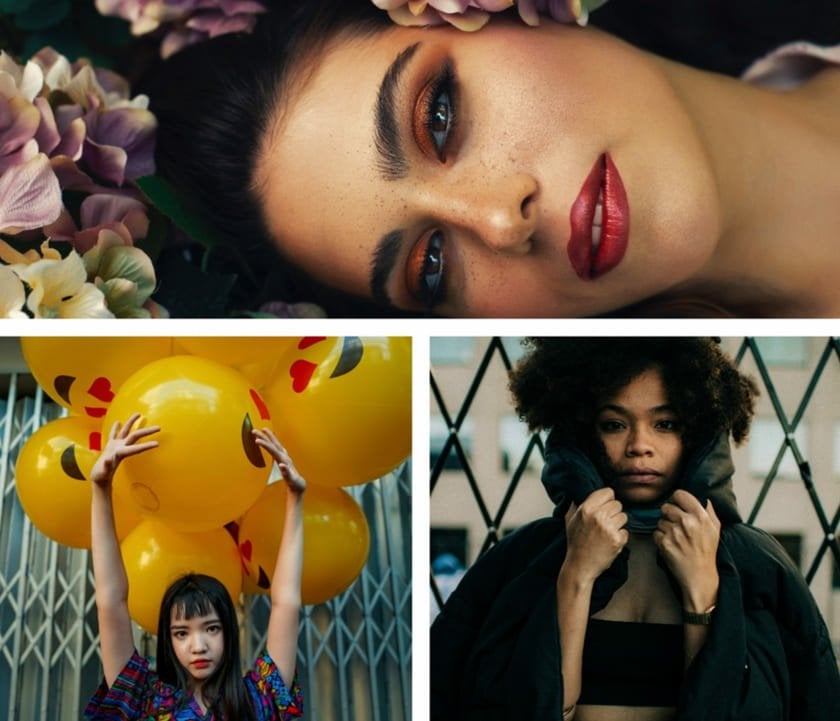
2. Überleg dir, was für deine Szene am besten geeignet ist.
Am besten machst du das so, wie es dir am besten gefällt. Schau dir das Objekt einfach an und entscheide selbst. Wo ist der beste Platz für eine Kamera oder ein Handy, um ein Foto zu machen? Halte dein Handy horizontal, wenn es sich um eine große Szene handelt, damit alles im Bild ist. Wenn du nur eine Person, einen Vogel oder ein Haustier vor dir hast, solltest du ein Hochformat aufnehmen, da das Foto viel weniger Details enthält als das Querformat.
Wenn du dir nicht sicher bist, welche Ausrichtung du wählen sollst, probiere einfach beide aus, um zu sehen, welche Ausrichtung die besten Ergebnisse liefert. Mach noch ein Foto, damit du später nicht bereust, dass das Foto nicht in einer der beiden Ausrichtungen aufgenommen wurde.
Wann sollte man das Hochformat verwenden?
Hochformat
Wenn du dich zwischen Querformat und Hochformat entscheidest, denk daran, dass die Art und Weise, wie du dein Motiv positionierst, einen erheblichen Einfluss auf die Komposition deines Porträts haben kann. Im Hochformat sind die oberen und unteren Ränder stärker ausgeprägt. Wenn du z. B. ein hohes Gebäude horizontal fotografierst, musst du anders vorgehen als bei einem vertikalen Motiv.
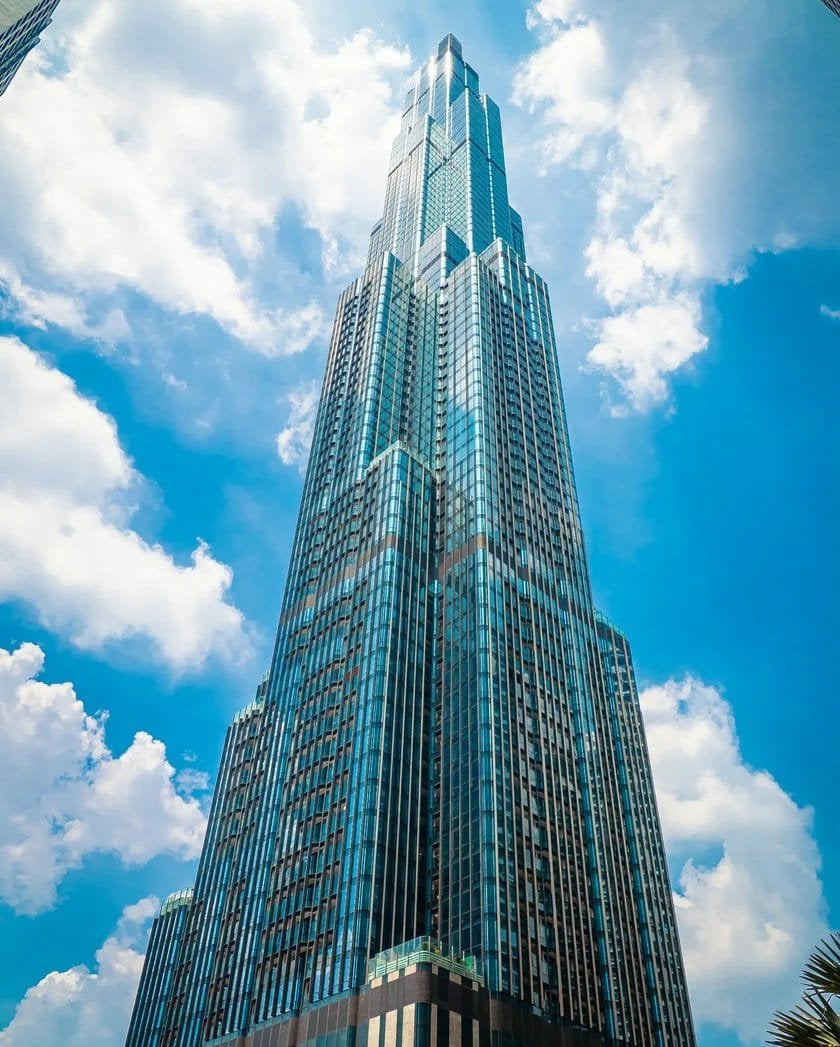
Um das hohe Gebäude in seiner ganzen Pracht einzufangen, stell dich dicht daneben und konzentriere dich darauf, bestimmte Teile des Gebäudes zu fotografieren. Vermeide es, zu viel Umgebung in das Bild einzubeziehen, und so das Gebäude klein und verletzlich wirken zu lassen. Die Harmonie der Komposition kann falsch sein, wenn du Porträts im Querformat aufnimmst.
Weitläufige und hohe vertikale Objekte
In der Fotografie ist Querformat im Vergleich zu Hochformat eines der häufigsten Argumente, daher gibt es viele verschiedene Faktoren zu berücksichtigen. In ein anderes Genre der Fotografie fällt ein weitläufiges und hohes Gebäude. Dabei kann es sich um eine Landschaft mit einem massiven Felsvorsprung oder um ein Bauwerk mit einem hoch aufragenden Wolkenkratzer handeln.
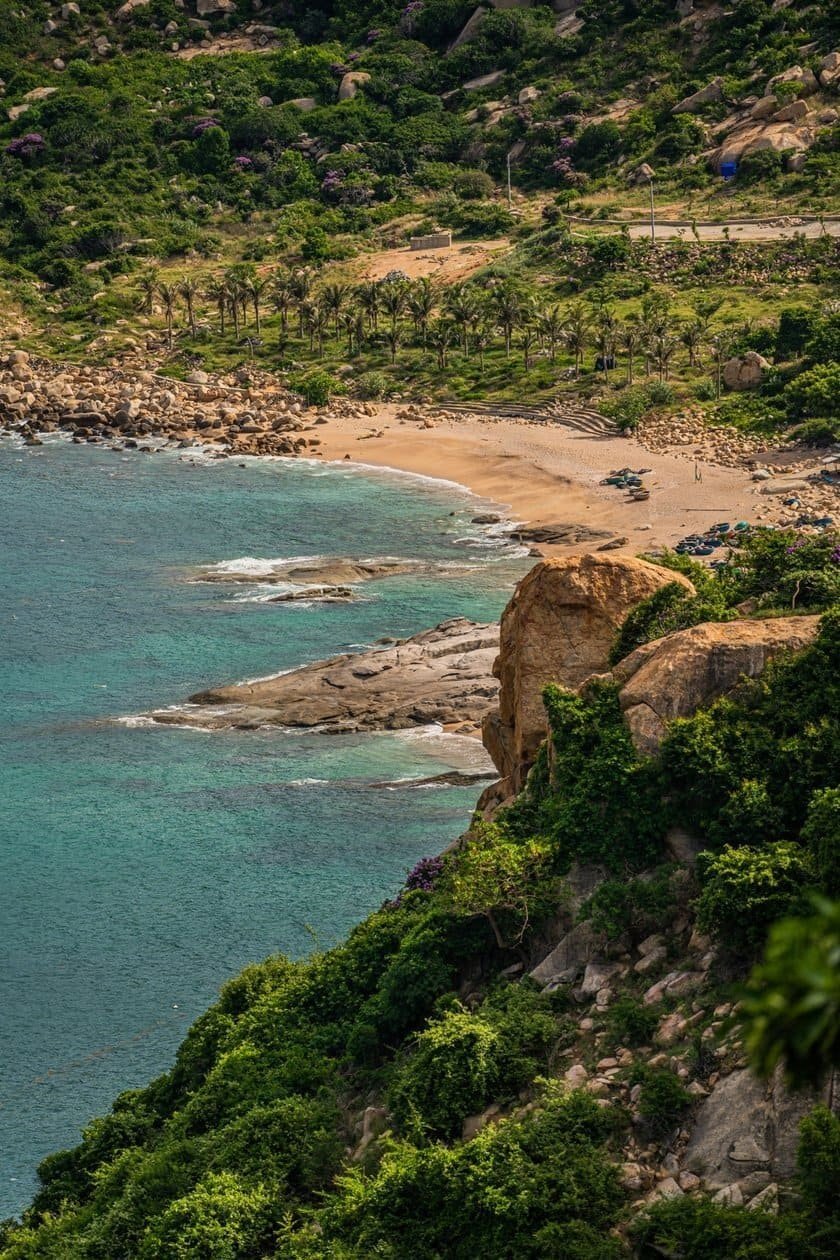
Hintergrundelemente in einem Porträt können das Foto stören
Der Modus Hochformat ist eine ausgezeichnete Wahl, wenn du eine Nahaufnahme des Hauptmotivs machen möchtest. Er kann den Hintergrund perfekt unscharf machen und so ein hochwertiges und vollständiges Bild erzeugen.
Im Hochformat ist weniger Platz für die Hintergrundelemente. Wenn also das Hauptmotiv deines Fotos mehr im Mittelpunkt steht und der Hintergrund nicht so sehr betont werden soll, bietet der Hochformatmodus mehr Kontext.
Wann sollte man das Querformat verwenden?
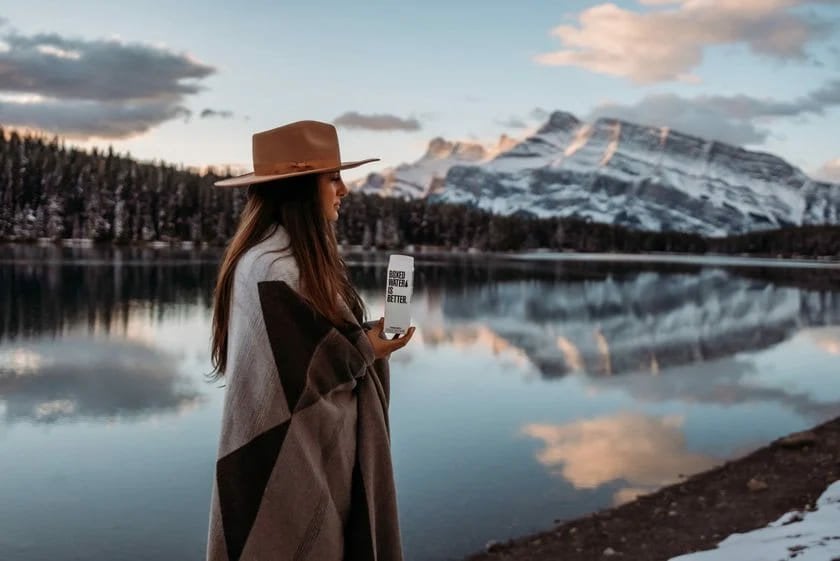
Fall 1. Fotos von Landschaften
Der Hauptgrund für die Wahl des Querformats ist, dass du viele Elemente in die Szene aufnehmen möchtest. Beim Querformat geht es vor allem um die Entfernung. Wenn du eine Landschaft fotografierst, sollte sie groß wirken oder genug Platz zum Atmen haben. Wenn du das gleiche Objekt von der gleichen Stelle aus fotografieren, hat das Foto im Querformat mehr Volumen. Du siehst dann weniger von dem Objekt. Wenn es zu viele leere und irrelevante Bereiche im Bild gibt, geh näher an das Objekt heran, um weniger unwichtige Teile aufzunehmen.
Entdecke die Leistung von AI in der Landschaftsfotografie
JETZT EINTAUCHEN!Fall 2. Dein Objekt ist breit
Das Querformat ist das Gegenteil des Hochformats. Dein Bild ist höher als breit, während das Querformat genau das Gegenteil ist. Vergleicht man außerdem den Druck im Querformat mit dem im Hochformat, so wird deutlich, dass Bilder im Querformat umfassender sind als im Hochformat. Das Querformat bietet ein dynamisches Gefühl der Ausgewogenheit und des Schutzes, das beim Fotografieren im Hochformat oft fehlt.
Fall 3. Gruppenfoto
Ein ideales Beispiel wäre eine Abschlussfeier, ein Geburtstag oder eine andere Feier. Am besten verwendest du das Querformat, wenn du alle deine Verwandten oder Freunde auf ein Gruppenfoto bekommen möchtest. Versuche gar nicht erst, im Hochformat zu fotografieren, da nur 2 oder 3 Personen auf das Bild passen.
Kameraeinstellungen: Porträtfotografie im Vergleich zum Landschaftsfotografie
Bei der Fotografie kann die Ausrichtung der Kamera einen großen Unterschied für das Gesamtbild der Aufnahme ausmachen. Kameras verfügen in der Regel über eine Vielzahl von Einstellungen. Du kannst sowohl im Hoch- als auch im Querformat verschiedene Fotooptionen verwenden, und die Ergebnisse werden sich ändern. Obwohl erfahrene Fotograf*innen bei ihrer Arbeit viele Tricks und Techniken anwenden, sind diese beiden Modi - Hoch- und Querformat - immer noch die beliebtesten. Beide Optionen bieten Vor- und Nachteile, daher ist es wichtig, den Unterschied zu kennen, bevor man sich für eine entscheidet. Es liegt an dir zu entscheiden, welche Ausrichtung - Hoch- oder Querformat - für deine Bilder richtig ist.
Porträtfotografie
Bei der Porträtfotografie der Porträtfotografie stellt sich deine Kamera automatisch auf die Aufnahme einer Person ein. Solange sie nicht im manuellen Modus ist. In der Regel wird das Profil einer Person angezeigt, und die Schärfentiefe ist im Allgemeinen gering. Die besten Ergebnisse erzielst du, wenn du gut beleuchtete und helle Kameraeinstellungen wählst.
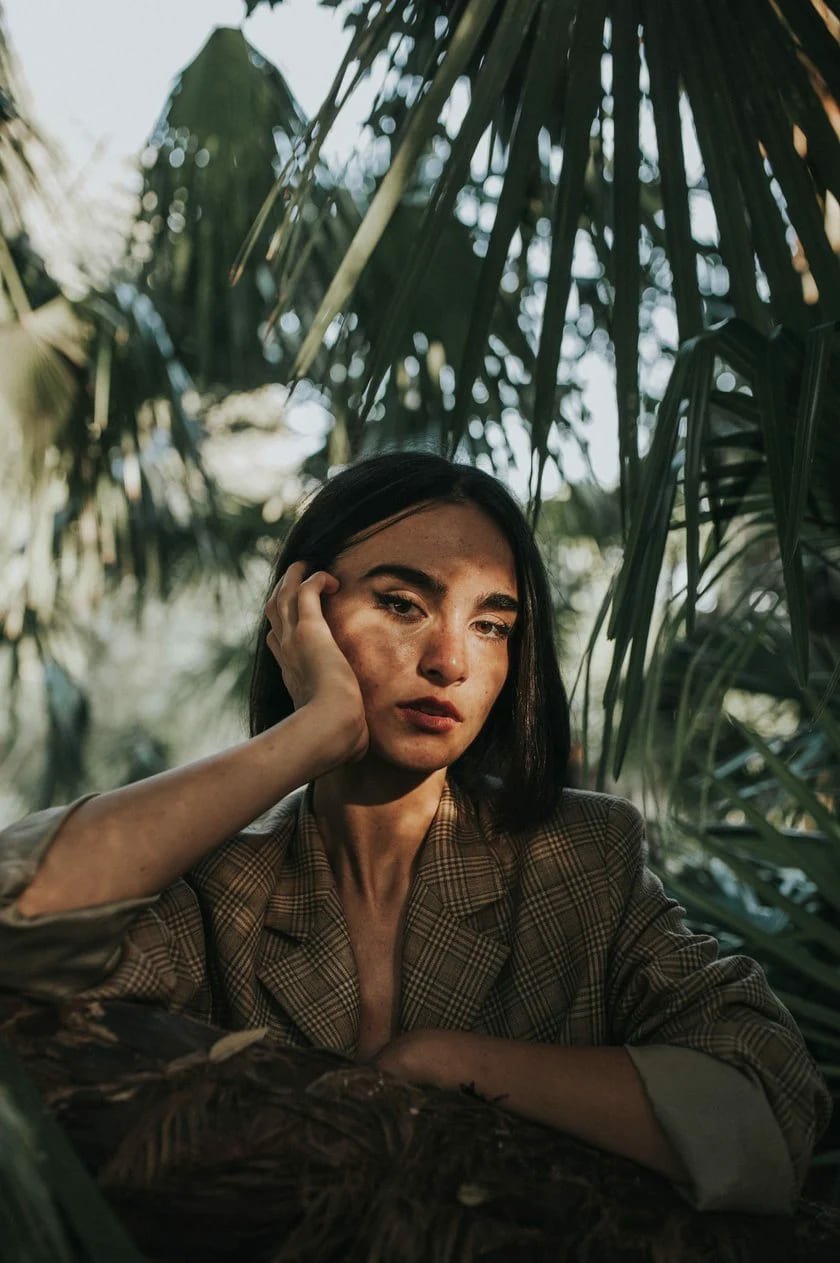
Die endgültige Lösung für bildschöne Porträts
Heute entdecken!Landschaftsfotografie
Im Querformat stellt sich die Kamera automatisch auf die Aufnahme einer Szene ein. Wenn sich die Kamera nicht im manuellen Modus befindet, wird die Schärfentiefe automatisch vergrößert, normalerweise mit einer kleineren Blende.
In der Regel siehst du ein Bergsymbol, was für Gelegenheitsfotografen praktisch ist. Dies ist die Kameraeinstellung, die sich Liebhaber der Landschaftsfotografie wünschen, aber es hängt immer noch alles vom Motiv, der Szene und dem Zweck des Bildes ab.

Verlass dich nicht auf die automatischen Einstellungen deiner Kamera – gewöhne dich daran, deine Kamera einzustellen, um einzigartige Kombinationen von Einstellungen zu erstellen und beeindruckende Bilder zu produzieren.
Ändern der Ausrichtung eines Fotos mit Luminar Neo
Wir haben uns eingehend mit der Frage von vertikalen und horizontalen Ansichten befasst. Jetzt geht es darum, was zu tun ist, wenn du ein tolles Foto hast, das eine andere Ausrichtung braucht. Vor allem bei Anfängern ist dies häufig der Fall, wenn der Bildausschnitt während der Aufnahme nicht perfekt ist. Hier sind einige Tools in Luminar Neo, die bereits in diesem Artikel erwähnt wurden, um zu helfen:
● Ändern eines Fotos vom Quer- ins Hochformat: Verwenden Sie das Tool Zuschneiden, um das Foto nach Bedarf anzupassen, oder lass die AI dies für dich tun. Um die Qualität des Fotos zu verbessern, kannst du auch Upscale AI verwenden.
● Ein Foto in das Gegenteil des Querformats umwandeln: Manchmal reicht es aus, das Foto zuzuschneiden, aber das kann die Qualität und den Gesamteindruck beeinträchtigen. In solchen Fällen solltest du das Tool Generatives Erweitern verwenden. Gib einfach eine Eingabeaufforderung ein, und die AI fügt die fehlenden Teile in Sekundenschnelle hinzu.
Erlebe die Leistungsfähigkeit eines einfachen, aber wirkungsvollen Tools zur Größenänderung von Bildern
Jetzt ausprobierenHier findest du auch Tools, mit denen du deine Fotos sofort verbessern kannst, z. B. Verstärken AI, das mehrere Parameter mit einem einzigen Schieberegler anpasst. Es gibt zahlreiche Funktionen zur Verbesserung von Porträts und zur Beseitigung von Unvollkommenheiten sowie alles, was du zur Bearbeitung deiner Fotos im Querformat brauchst. Um mehr zu erfahren, empfehlen wir dir eine Produkttour, oder du kannst es gleich kaufen und all diese fortschrittlichen Funktionen mit deinen Fotos testen.
Was ist die bessere Wahl zum Fotografieren: Querformat oder Hochformat
Die Entscheidung für das Hoch- oder Querformat ist ein guter Start für alle, die mit der Fotografie beginnen. Vergiss aber nicht, auch andere Tipps und Tricks zu entdecken! Bei der Fotografie geht es vor allem darum, zu experimentieren und Fehler zu machen - zum Glück sind wir nicht mehr in einer Zeit, in der wir erst in ein Fotostudio gehen und unseren Film entwickeln lassen müssen, bevor wir die Ergebnisse unserer Experimente sehen können! Wir haben Hunderte oder Tausende von Versuchen, um ein gutes Foto zu machen und ein Profi darin zu werden.
Quer- und Hochformat sind zwei Möglichkeiten, die ein Fotograf bei der Erstellung von Kunstwerken wählen muss. Beide Optionen haben Vor- und Nachteile, daher ist es wichtig, den Unterschied zwischen ihnen zu verstehen, bevor man sich entscheidet. Hier finden Sie eine Übersicht über die beiden Ausrichtungen, damit du die beste Wahl für deine Fotografie treffen kannst.
Kurz gesagt, du solltest Objekte entsprechend ihrer Größe fotografieren. Wenn das Objekt groß ist oder du bestimmte Details hervorheben und den Hintergrund unscharf abbilden möchtest, ist der Hochformatmodus die ideale Lösung. Wenn du ein breites Objekt in die Kamera einpassen oder eine schöne Landschaft fotografieren möchtest, solltest du Querformat verwenden. Was ist also der Unterschied zwischen Quer- und Hochformat? Dies sind die üblichen Kameramodi, und es ist unmöglich zu sagen, welcher besser oder schlechter ist. Letztendlich musst du selbst entscheiden, was beim Vergleich von Hoch- und Querformat am besten ist.


